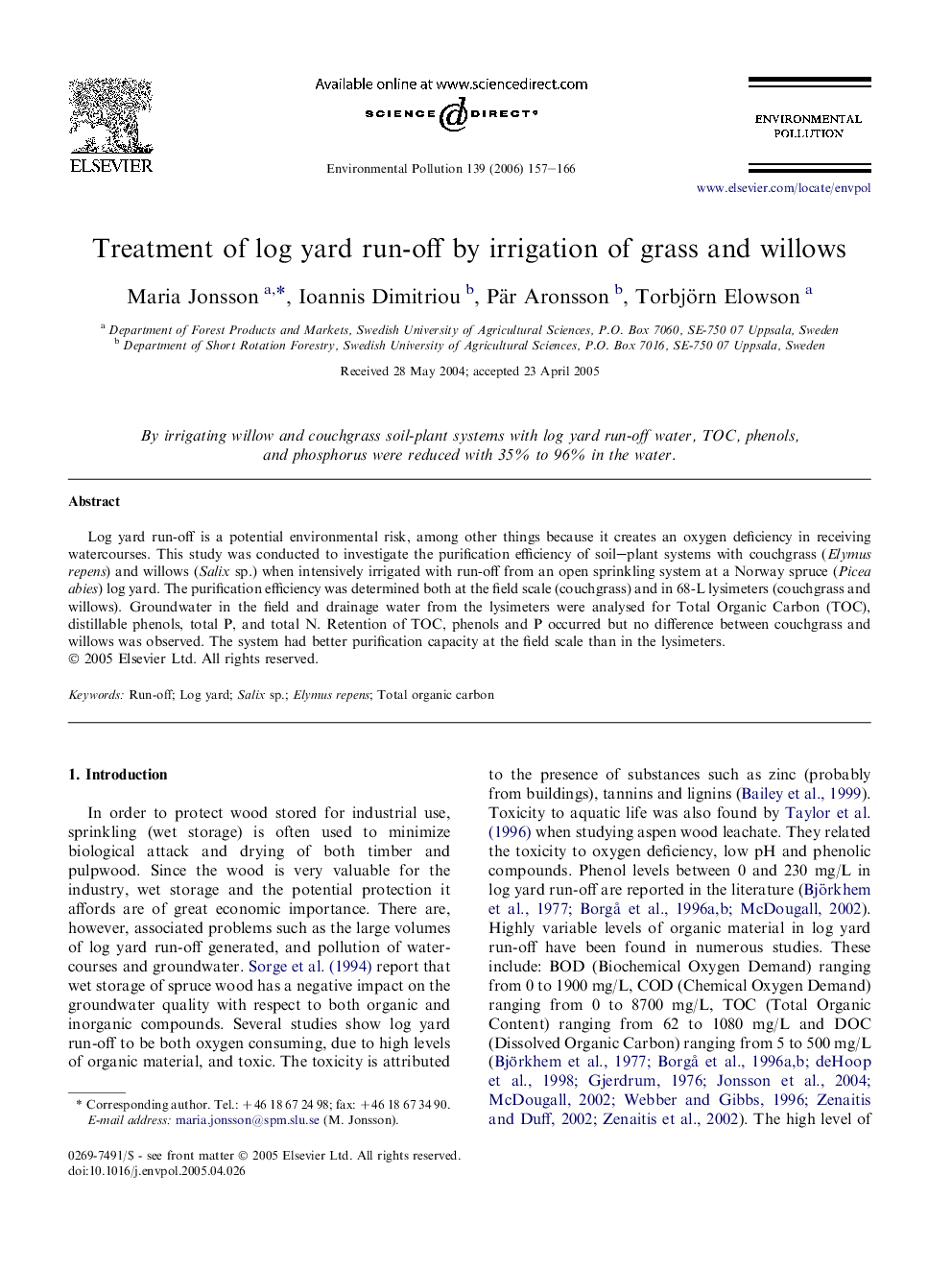| Article ID | Journal | Published Year | Pages | File Type |
|---|---|---|---|---|
| 4428115 | Environmental Pollution | 2006 | 10 Pages |
Log yard run-off is a potential environmental risk, among other things because it creates an oxygen deficiency in receiving watercourses. This study was conducted to investigate the purification efficiency of soil–plant systems with couchgrass (Elymus repens) and willows (Salix sp.) when intensively irrigated with run-off from an open sprinkling system at a Norway spruce (Picea abies) log yard. The purification efficiency was determined both at the field scale (couchgrass) and in 68-L lysimeters (couchgrass and willows). Groundwater in the field and drainage water from the lysimeters were analysed for Total Organic Carbon (TOC), distillable phenols, total P, and total N. Retention of TOC, phenols and P occurred but no difference between couchgrass and willows was observed. The system had better purification capacity at the field scale than in the lysimeters.
